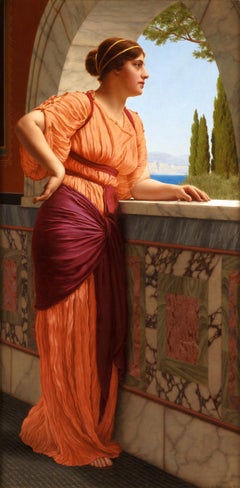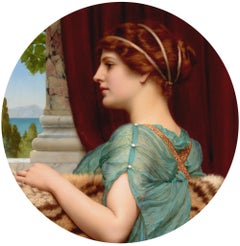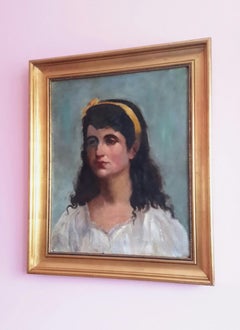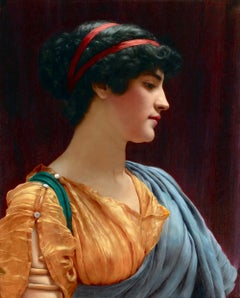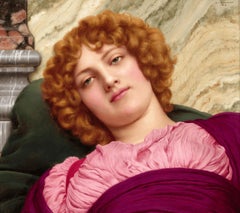John William Godward Art
John William Godward is considered among the top British Neoclassical artists of his time. His career was devoted to a segment of Classicism known as the Marble School, with Greco-Roman subjects placed within elaborate settings that often centered upon marble architectural elements. His elegantly adorned beauties are depicted with a degree of technical mastery that remains unsurpassed. Godward's work is most celebrated for its implicit sensuality and masterful, naturalistic detail. Raised in Wimbledon, England, Godward debuted at London’s Royal Academy exhibition in 1887. By the subsequent decade, the burgeoning artist was on a steady ascent to artistic success. Having fallen under the influence of British Neoclassical Revivalists Sir Lawrence Alma-Tadema, Lord Frederic Leighton and Sir Edward John Poynter, Godward quickly adopted their style. The sensuality and mystery of Godward’s female subjects, combined with his impressive Greco-Roman settings, attracted fans across Europe and sent Godward on a rapid ascent to artistic stardom. In 1889, he was elected to the Royal Society of British Artists. Ten years later, Godward debuted at the Parisian Salon of 1899, where he was heaped with praise. In the early years of the 20th century, however, Godward was faced with the painful reality that the classical world he so loved was being overshadowed by modern art movements. He moved to Rome in 1912 to surround himself with the physical remnants of the classical world, and there he stayed for most of his remaining career.
20th Century Other Art Style John William Godward Art
Oil, Canvas
20th Century John William Godward Art
Oil, Canvas
Early 20th Century Academic John William Godward Art
Oil, Canvas
19th Century Academic John William Godward Art
Canvas, Oil
2010s Academic John William Godward Art
Canvas, Oil
1680s Old Masters John William Godward Art
Canvas, Oil
17th Century Baroque John William Godward Art
Oil, Canvas
2010s Academic John William Godward Art
Oil, Canvas
Early 20th Century Impressionist John William Godward Art
Canvas, Oil
Venice Landscape Italian Oil on Canvas Painting in Gilt Wood Frame, Belle Epoque, Early 20th Century
Late 18th Century John William Godward Art
Canvas, Oil
17th Century Old Masters John William Godward Art
Canvas, Oil
18th Century and Earlier John William Godward Art
Canvas, Oil
18th Century and Earlier Baroque John William Godward Art
Canvas, Oil
1820s Old Masters John William Godward Art
Oil, Canvas
18th Century John William Godward Art
Canvas, Oil
Early 20th Century Other Art Style John William Godward Art
Canvas, Oil
Early 20th Century Other Art Style John William Godward Art
Canvas, Oil
John William Godward Art
John William Godward Art
Canvas, Oil
